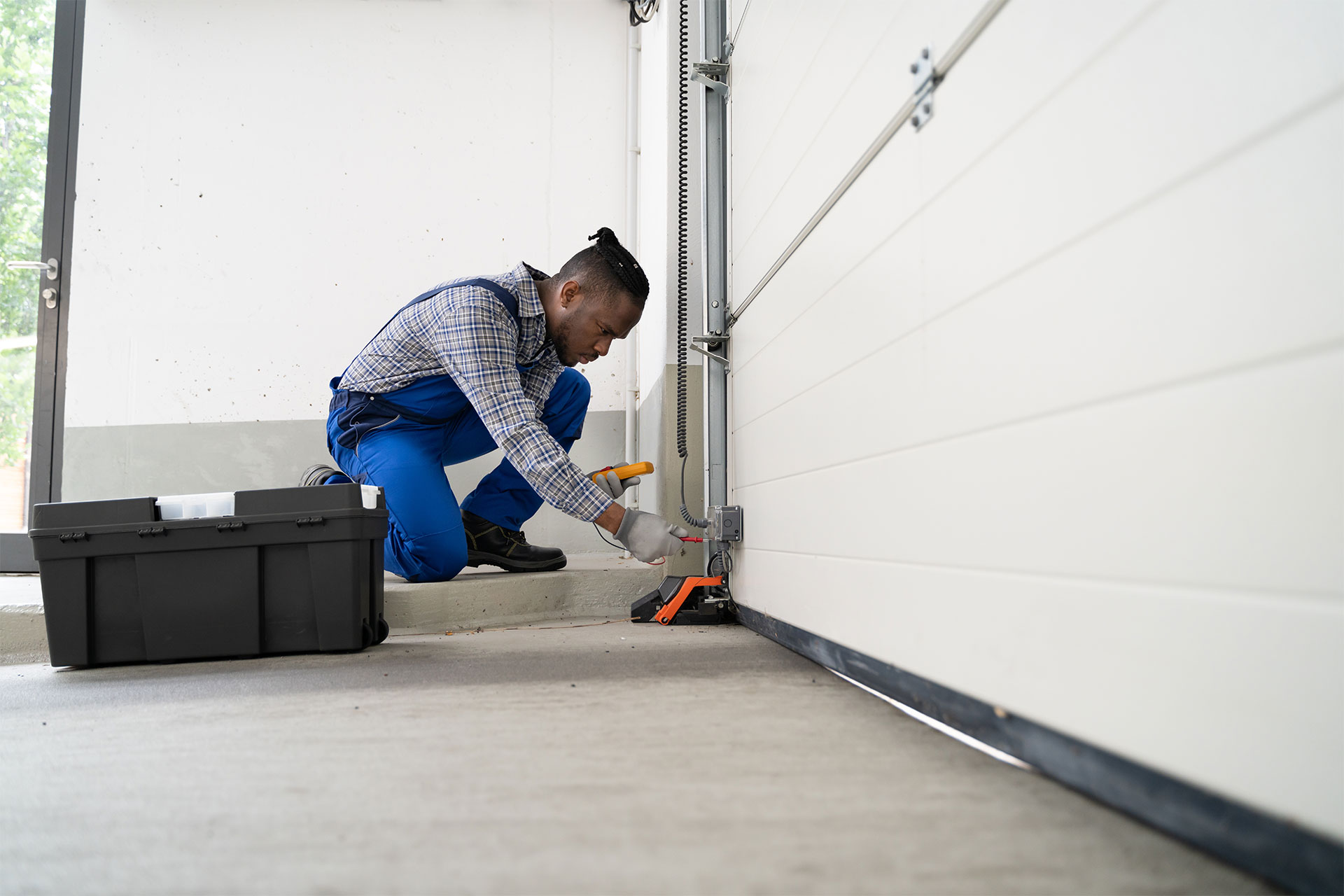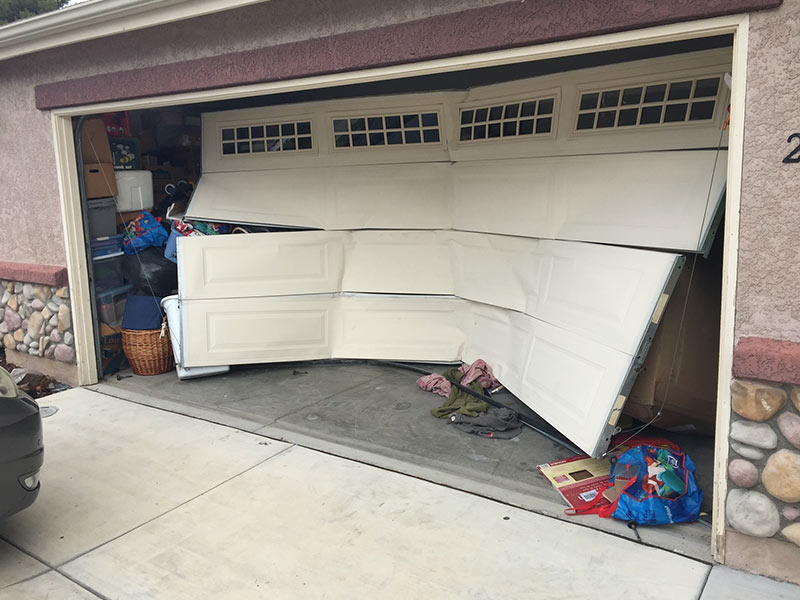Usual Garage Door Issues and Just How to Fix Them
Garage doors are necessary for both safety and comfort, yet they often offer a selection of common problems that can annoy homeowners. Problems such as excessive noise during procedure, doors that fall short to open up or close, misaligned tracks, and malfunctioning remotes can arise without caution. While some concerns may appear simple to solve, others may need an extra nuanced understanding of garage door auto mechanics. Attending to these troubles efficiently not just enhances capability yet also extends the life of the door. One might question what actions are required to take on these difficulties successfully.
Noisy Garage Door Operation
A loud garage door procedure can be a considerable source of inconvenience for home owners, often showing underlying mechanical concerns. Such interruptions may stem from different reasons, consisting of worn-out rollers, loosened hardware, or inadequate lubrication. Determining the resource of the noise is vital for effective resolution.
One common reason of extreme noise is the existence of rusty or worn-out rollers. Over time, these parts can deteriorate, resulting in grinding or squealing audios as the door actions. Routine assessment and replacement of these rollers can dramatically decrease sound levels. In addition, loose screws or screws in the door device can create rattling sounds during operation. Tightening these bolts guarantees a more stable and quieter movement.
An additional adding element is insufficient lubrication of the door's relocating parts. Using a top quality lube to the tracks, springtimes, and rollers can considerably diminish friction and sound. Home owners should execute this upkeep regularly to preserve optimal performance.
Finally, the garage door opener may additionally generate noise due to its age or mechanical concerns. If the noise lingers despite addressing other factors, seeking advice from a specialist for a comprehensive assessment and possible repair might be needed.
Door Won't Open Up or Close
Experiencing a garage door that won't open up or close can be incredibly discouraging and commonly indicates a malfunction within the system. A number of elements can add to this concern, and identifying the origin is necessary for reliable resolution.

Next, check the security sensors located at the base of the door. These sensing units can end up being misaligned or obstructed by particles, preventing the door from operating appropriately. Clean the sensors with a soft cloth and guarantee they are straightened.
Additionally, the garage door's interior parts need to be examined. Issues such as a busted springtime, damaged rollers, or a harmed opener can restrain activity. If any type of components appear to be harmed, it may be advisable to get in touch with a professional for repair services.
Misaligned Tracks
(High-Quality Standards)Misaligned tracks can drastically interrupt the smooth operation of a garage door, bring about operational failures such as uneven motion or total immobilization. This concern generally emerges due to a selection of elements, consisting of deterioration, unintended influences, or improper setup. When the tracks are misaligned, the rollers can not relocate openly, which not just strains the electric motor yet likewise positions safety and security risks.
If you observe any type of disparities, it is essential to attend to the issue immediately. Meticulously touch the track back right into its correct placement using a rubber club or a comparable device, guaranteeing it is straight and degree.
As soon as the placement is remedied, retighten the screws to protect the track. For a more permanent solution, consider enhancing the tracks with extra brackets. Regular maintenance, consisting of cleansing the tracks and ensuring rollers remain in good condition, can prevent future imbalances. By resolving misaligned tracks promptly, you can recover the capability of your garage door and improve its durability.
Broken Springs
Among the different components of a garage door system, busted springtimes are one of the most usual issues that can dramatically hinder its performance. Garage door springs are vital for balancing the weight of the door, permitting smooth opening and closing. When a spring breaks, it can lead to a door that is hard to run or, in many cases, totally unusable.
There are two main kinds of springs: torsion springtimes, which are installed over the door, and extension springs, found on either side. Indicators of a damaged spring consist of a door that will not open up, a visible gap in the springtime, or a loud noise throughout operation. Trying to operate a garage door with a busted spring can cause additional damages to the door or the opener.
Fixing busted springs is not a do it yourself project; it needs specialized tools and expertise because of the high tension included. It is recommended to get in touch with an expert specialist who can safely replace the springtimes and guarantee the door is correctly stabilized. Regular maintenance and assessments can assist protect against spring failings and extend the lifespan of the garage door system.
Push-button Control Issues

The very first step is to check the batteries in the remote control. Change them if they are weak or dead. If the remote still fails to operate, inspect the garage door opener to guarantee that its sensors are tidy and unobstructed. Dust, particles, or imbalance might impede the signal transmission click here to read between the remote and the opener.
Disturbance from other electronic tools can additionally impede remote functionality. Make sure that nearby tools, such as cordless routers or cordless phones, are not causing disruptions. garage door service. If interference is presumed, try moving these tools better away from the garage door opener
In some instances, the remote might require to be reprogrammed. Get in touch with the producer's guidelines to reset the push-button control and integrate it with the garage door opener. If all else stops working and the remote remains to malfunction, think about getting in touch with an expert technician for a comprehensive examination and potential substitute of the remote or opener.
Conclusion
(Quick Solutions)In recap, usual garage door problems can substantially impact capability and safety. Proactive upkeep and timely repair work can make sure optimal performance and durability of garage doors.